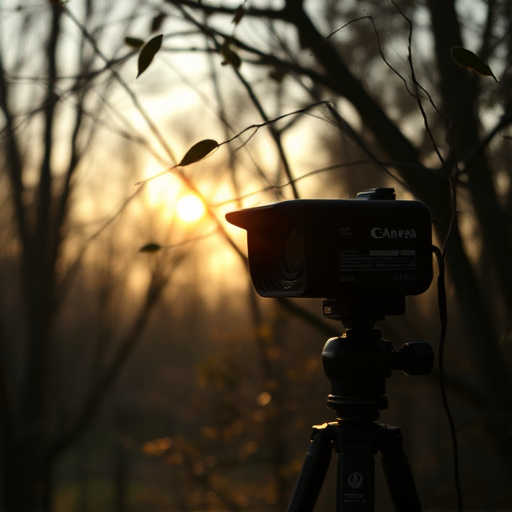Wireless Night Vision Security Cameras Indoors are transforming covert monitoring with 24/7 discreet surveillance, leveraging infrared technology and motion detection for comprehensive coverage. Ideal for high-security areas like data centers and financial institutions, they offer clear footage in darkness, eliminate blind spots, simplify installation and maintenance, and enable real-time monitoring through smartphone apps. Strategic placement is key, avoiding detection by positioning cameras discreetly yet unobstructively, while regular maintenance ensures optimal performance.
In today’s digital era, enhancing security measures is paramount for businesses and residences alike. One effective tool that often goes unnoticed yet packs a punch is the covert monitoring system, particularly Wireless Night Vision Security Cameras Indoors. This professional placement guide delves into the critical need for such systems, highlighting their benefits, optimal placement strategies, and best practices for installation and maintenance to ensure comprehensive security without compromising privacy.
- Understanding the Need for Covert Monitoring Systems
- Benefits of Wireless Night Vision Security Cameras Indoors
- Choosing the Right Placement Strategy
- Best Practices for Professional Installation and Maintenance
Understanding the Need for Covert Monitoring Systems
In today’s digital era, security has become a paramount concern for businesses and individuals alike. With the rise in sophisticated cyber threats and physical security breaches, having robust surveillance systems is more critical than ever. Covert monitoring systems, equipped with wireless night vision security cameras indoors, offer a discreet yet powerful solution. They allow for constant observation without alerting potential intruders or disrupting operations, providing an added layer of protection.
Wireless night vision security cameras indoors are game-changers in covert monitoring. Their advanced features, such as infrared technology and motion detection, enable round-the-clock surveillance, ensuring that every corner of a premises is covered. This technology is particularly useful for high-security areas, like data centers or financial institutions, where unauthorized access must be prevented at all costs.
Benefits of Wireless Night Vision Security Cameras Indoors
Wireless Night Vision Security Cameras Indoors offer a multitude of benefits, enhancing security and peace of mind for professionals in various settings. One of the key advantages is their capability to provide clear, detailed footage even in complete darkness, thanks to advanced infrared technology. This feature is particularly valuable indoors, where traditional cameras might struggle with low-light conditions. By eliminating blind spots, these cameras ensure every corner of a space is monitored effectively.
Furthermore, the wireless nature of these devices simplifies installation and maintenance processes. Professionals can quickly set up the cameras without the need for complex wiring, making them ideal for dynamic work environments. Real-time monitoring capabilities and remote access through smartphone apps also allow for swift responses to any security incidents, providing an added layer of protection and convenience.
Choosing the Right Placement Strategy
When setting up a covert monitoring system, especially using wireless night vision security cameras indoors, choosing the right placement strategy is paramount. It’s crucial to position cameras in areas that offer unobstructed views while remaining hidden from sight. This might involve installing them near windows or on ceilings, ensuring minimal interference from furniture or decor. Additionally, consider factors like lighting; infrared technology in wireless night vision cameras can be affected by bright lights, so strategic placement is key to maintaining optimal performance.
The goal should be a balance between comprehensive coverage and aesthetic discretion. For instance, placing cameras in corners or along walls can provide wide-angle views while keeping them less noticeable. It’s also essential to account for potential obstacles like curtains or blinds that could block the camera’s field of view. A well-planned placement strategy not only enhances the system’s effectiveness but also ensures its longevity and the preservation of a sense of privacy in the monitored space.
Best Practices for Professional Installation and Maintenance
When installing a covert monitoring system, especially using Wireless Night Vision Security Cameras Indoors, adherence to best practices is paramount. Begin by thoroughly assessing the location and identifying potential blind spots that could hinder surveillance. Ensure optimal camera placement for maximum coverage, taking into account factors like lighting, obstructions, and the layout of the space being monitored. Professional installation should also involve discreet wiring and strategic positioning to avoid detection, preserving the covert nature of the system.
Regular maintenance is equally crucial. Keeping Wireless Night Vision Security Cameras Indoors clean and well-maintained ensures optimal performance and longevity. Regular software updates are essential to patch security vulnerabilities and improve functionality. Additionally, routine calibration and testing of sensors and alerts guarantee responsiveness during critical moments. Timely maintenance also includes checking power sources, ensuring reliable backup systems, and replacing consumables like batteries and memory cards to prevent data loss or system downtime.
Covert monitoring systems, especially wireless night vision security cameras indoors, offer enhanced security and peace of mind. By understanding the need for these systems, leveraging their benefits, and implementing best practices during installation and maintenance, businesses can create a safer environment. When choosing the right placement strategy, consider strategic locations to maximize coverage and deter potential threats. Remember that professional guidance is invaluable in ensuring optimal performance and reliability of your covert monitoring system.
